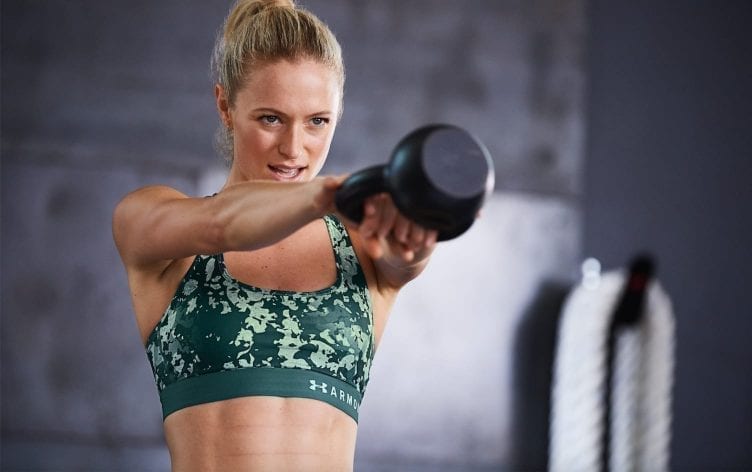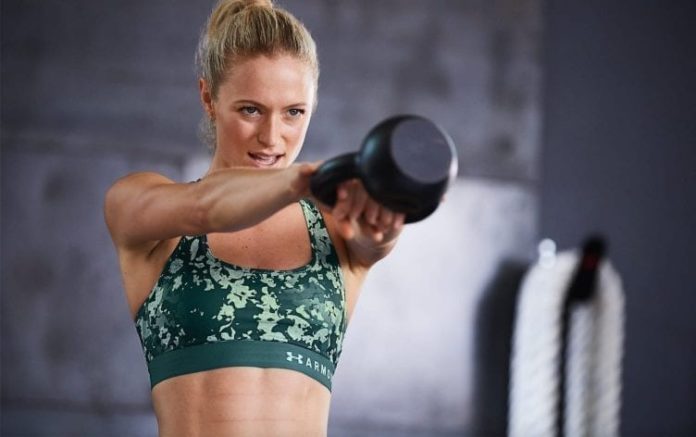
If you want stronger glutes, hamstrings and back muscles (and who wouldn’t?), then you should be doing kettlebell swings, expert trainers say. “It’s also a great exercise for core strength,” adds Jennifer Novak, MS, a strength and conditioning coach and owner of Peak Symmetry.
“Research has suggested that kettlebell swings can augment key athletic skills such as vertical jump, sprint speed and maximal strength,” Novak notes. “Because of the number of joints involved, the kettlebell swing can be a great addition to a strength program — as long as technique and good posture are maintained throughout each phase of the swing.”
Whether you’re new to kettlebell swings or have been working on them for a while, here’s how to fine tune your form for maximum benefit.
1
REMEMBER: IT’S A SWING, NOT A SQUAT
“One of the biggest faults of performing the kettlebell swing effectively is that people will squat within the movement, as opposed to utilizing an effective hip hinge,” explains Michael Piercy, 2017 IDEA Personal Trainer of the Year and owner of The Lab Fitness. “The hinge movement should consist of maximal hip flexion and extension, but the knee flexion should be minimal.” In other words, you should be bending and extending at the hip (so your chest comes forward toward the floor and then back up again) rather than at the knee, like you would in a squat.
This can be tough to get the hang of, though. “My favorite drill to correct this is taken from Pavel Tsatsouline (the godfather of kettlebells) himself,” notes Shana Verstegen, fitness director at Supreme Health and Fitness in Wisconsin. “Loop a towel through the handle of the kettlebell and perform your swings gripping onto the towel rather than the bell. At the top of the swing, if proper momentum is used, the kettlebell and towel will be in a straight line parallel with the floor and the kettlebell will be weightless for a moment.”
Once you get the hang of it, try again without the towel and see if you can feel the difference.
2
MAINTAIN GOOD POSTURE
“One error I see frequently is utilizing poor posture, especially in the upper back by rounding it, Novak says. This can cause problems in your upper and lower back, as well as in your shoulder joints.
“Fixing the rounded upper back issue may take practice, because many people begin with a more rounded posture to begin with,” Novak points out. This may be especially true if you work in front of a computer all day.
Use a broomstick, PVC pipe or a similar object to practice hip hinging with a straight upper back. “Hold the broomstick vertically behind your head down the center of the back and practice the hinge with the broomstick guiding your posture,” Novak says. Send your chest forward and your hips back while maintaining just a soft bend in your knees. Then, try it with the bell.
3
USE A SECURE BUT GENTLE GRIP
If you feel kettlebell swings mostly in your hands and arms, listen up: “A common fault is for people to attempt to lift and lower the bell in the swing while gripping the kettlebell into dust,” Piercy says.
Trying to “over muscle” the kettlebell with your hands is likely to result in, well, hand cramps — and not much else. In the flow of the movement, the kettlebell should be driven by the momentum of your hips hinging rather than anything you’re doing with your hands or arms, so keep your grip secure, but gentle.
4
KEEP YOUR KNEES SOFT, BUT STRONG
Many people lock their knees as they finish swinging the kettlebell up, which is not so great for your knee joints, Novak says. “Repeated stress to the cartilage, menisci and surrounding ligaments can create degenerative conditions and lead to arthritic changes.”
It’s pretty common for the snap of the hips at the top of a kettlebell swing to encourage subconscious knee locking, according to Novak, so you will need to pay attention to the mind-body connection to fix it. “Some people can correct this simply by hearing the cue ‘keep a soft, strong knee,’ while others may have to practice standing with the soft knee, and focus on simultaneously contracting the gluteus maximus into extension and contracting the quadriceps without changing the soft knee.” Eventually, you’ll get the feel for this movement and then can transfer it to the swing.
5
PRESS YOUR WHOLE FOOT INTO THE GROUND
If you feel your toes or heels coming up at the top of the swing, you’re missing out on some of the power you could get by pushing through your entire foot, and you’re likely not in control of the exercise for the duration of the movement. First, try using a lighter kettlebell, Novak recommends. If that doesn’t work, try the “short foot exercise.”
Take your shoes off, and press your big toe into the floor as if pressing a flat thumb tack in, to activate the arch and ground the foot, Novak instructs. It should almost feel like you’re making the arch of your foot shorter. From here, try swinging the kettlebell again (still barefoot, or with sneakers on if this is not allowed at your gym) and activating your shorter arch at the top of the swing, then relax it for the return.







